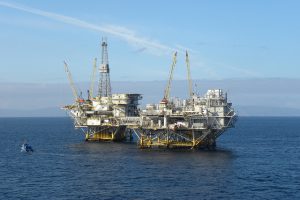 In January, the Bureau of Ocean Energy Management (BOEM) released its “America-First Offshore Energy Strategy,” as part of the 2019-2024 National OCS Oil and Gas Leasing Draft Proposal Program (DPP). While the Obama Administration’s 2017-2022 program opened up only 6% of total outer continental shelf (OCS) acreage to resource exploration and development, the 2019-2024 Program proposes to open up approximately 90%. The BOEM estimates the U.S. OCS has about 90 billion barrels of undiscovered oil and 327 trillion cubic feet of undiscovered, natural gas. If implemented, the 2019-2024 DPP would dramatically expand America’s capacity for offshore oil and gas drilling, yielding both economic and environmental costs and benefits.
In January, the Bureau of Ocean Energy Management (BOEM) released its “America-First Offshore Energy Strategy,” as part of the 2019-2024 National OCS Oil and Gas Leasing Draft Proposal Program (DPP). While the Obama Administration’s 2017-2022 program opened up only 6% of total outer continental shelf (OCS) acreage to resource exploration and development, the 2019-2024 Program proposes to open up approximately 90%. The BOEM estimates the U.S. OCS has about 90 billion barrels of undiscovered oil and 327 trillion cubic feet of undiscovered, natural gas. If implemented, the 2019-2024 DPP would dramatically expand America’s capacity for offshore oil and gas drilling, yielding both economic and environmental costs and benefits.
President Trump’s America-First offshore drilling policy is a departure from the Obama Administration’s, particularly with respect to CO2 emissions. Although the 2019-2024 Program has not released an Environmental Impact Statement, we can project the total magnitude of CO2 emissions will likely be greater than the 2017-2022 scenario since a much larger area of the OCS will be open for exploration and development. The significant uptick in estimated CO2 emissions may increase the likelihood of economic and environmental consequences. Additionally, with a larger area OCS open to leasing, the probability of an oil spill is likely to increase, especially in the Arctic where the OCS is more fragile.
Despite the possible environmental consequences, the DPP does offer an economic boost. The American Petroleum Institute released economic impact reports for the OCS that estimate a total of $615.1 billion in GDP growth and $153.9 billion in federal and state revenue. According to the EIA’s Annual Energy Outlook, the DPP would place the U.S. as an oil and gas net exporter by 2022 notwithstanding the environmental and social costs. Ultimately, the economic costs and benefits of the Program will depend on the price of oil, advancements in technology, and the costs of developing offshore wells. It will be interesting to see if the predicted economic gains will offset the possible environmental and social costs of the DPP, as well as, if the administration will be able to overcome considerable implementation barriers from states who wish to protect their coastal waters for tourism.
Offshore oil resources are far from my areas of expertise, so I have more questions than answers about this. However, my impression has been that with the possible exception of… Read more »
When are the API and the fossil industries going to accept that their time is up? They have challenged the scientific evidence and created confusion over climate change for the… Read more »
As a Wag once observed, the Stone Age did not end when we ran out of stones and the oil age will not end when we run out of oil.… Read more »
Bill: I’m glad you agree that fossil fuels should be judged by their direct and indirect social costs combined. While oil spills are an indirect social cost, the bigger and… Read more »
Dan, you and I have been down this road before and we take different forks in the road. The problem with your recommendation is that the attribution of the human… Read more »
Bill: The attribution to human impact is about as strong as it gets in science, though no level of uncertainty (which there will always be, given this is science) will… Read more »
Dan, these exchanges go no where because while you acknowledge uncertainty, your views reflect a level of certitude and belief in models that are unjustified. The range for climate sensitivity… Read more »
[…] for oil and gas drilling and to reduce regulatory burden. In 2017, the administration issued Executive Order 13795, the first step in enacting the “American First Offshore Energy Strategy.”… Read more »